A Complete Guide on Tibetan Festivals 2020 by Calendar
Festival is a great window looking into the soul of ethnic culture. Tibet, as one of the most unique and isolated regions in the world, boasts a great number of fabulous festivals, celebrations and events nearly all year round. Especially in peak tourist season from June to September, visitors have chances to experience a lot of grand events, such as Shoton Festival, Bathing Festival, Bumper Harvest Festival and regional horse-racing affairs.
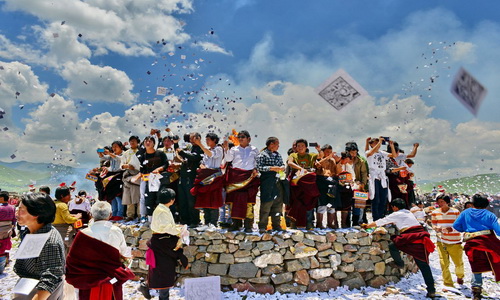
Some lasts for one or two days, while some would be celebrated for half a month. The diverse festival traditions and customs enable visitors to enjoy an in-depth exploration of Tibetan Buddhism and humanity spirit. See below the complete list of festivals and celebrations in Tibet, which introduces you to mystic Tibetan culture and help you plan a more interesting Tibet Tour.
Date: 1st day of the 1st month of Tibetan Calendar (24th Feb 2020)
Customs and Traditions:
Tibetan New Year, also known as Losar, is one of the grandest traditional festivals for Tibetans, which is celebrated for two weeks long during the month of December and January in Tibetan calendar. Just like the New Year for Han Chinese, it is the time for people to welcome the beginning of a new year and reunite with families.
Tibetans would prepare local delicacies to conclude a year of hard-working, and visit relatives and friends with hada (a piece of white or yellow silk used as a greeting gift). Dressed in rich attire, Tibetans gather in the square or grassland and dance to their folk music in great jubilance. In the New Year day's morning, people would be rigged out in their best to exchange New Year's wishes by their unique greetings Tashi Delek.
Date: 10th day of the 4th Month of the Calendar (1st June 2020)
Customs and Traditions:
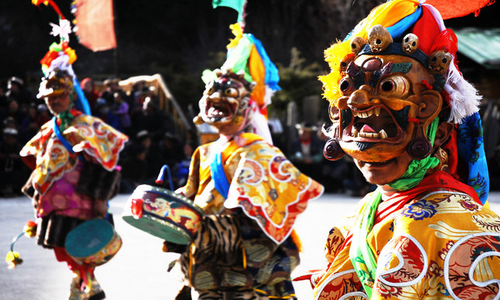
It is a great day of the year for Tsurpu monastery. With a history of thousands of years, the dance festival is observed to commemorate the Padmasambhava's birthday. On that day, monks of the monastery would wear their red long robes and big masks with their broadswords to dance to the drum beat in the open ground. The dancing is also a grand ritual praying for health and great harvest of the local people.
Date: 15th day of the 4th Month of Tibetan Calendar (5th June 2020)
Customs and Traditions:
Saga Dawa festival is celebrated as the anniversary of Buddha's birthday, completion of enlightenment and death (nirvana). During the festival, monks will hold religious activities to honor Buddha and chant sutras, while Tibetans would pay their homage to Buddha by making full-length prostrations circulating the Lhasa City. People also circumambulate sacred places like monasteries and stupas in a clock-wise direction.
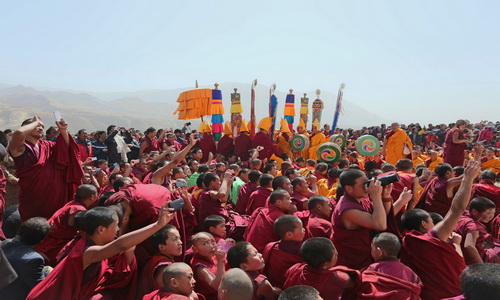
Dragon King Pool (Longwangtan) behind the Potala Palace would become a buzzing spot as thousands of locals in bizarre attire would gather there to relax themselves by singing, dancing and having picnics. Some captive animals would be set free as a way of seeking merit and bumper harvest.
Date: 14th - 16th day of the 5th Month of Tibetan Calendar (4th-6th July 2020)
Customs and Traditions:
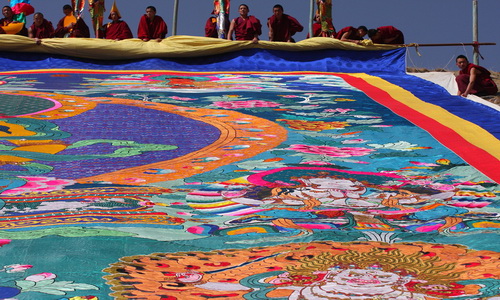
Buddha-Unfolding has been a significant event for over 500 years in Tashi Lhunpo Monastery. Three different huge portraits of Buddha are exhibited each day, and there will be thousands of monks doing religious activities such as chanting and praying. Local believers would also make circulating pilgrimages, rotating the prayer wheel or prostrating around the monastery for three days.
Date: 15th day of the 5th Month of Tibetan Calendar (5th July 2020)
Customs and Traditions:
Samye Monastery is the first monastery in Tibet dating back to 8th century. On 15th day of the 5th Month of Tibetan Calendar, the residing monks would hold traditional ceremonies, and undertake a great dancing party. Local followers would walk around the mountains and Samye Monastery as a way of dispelling their sins.
Date: 15th day of the 5th Month of Tibetan Calendar (5th July 2020)
Customs and Traditions:
Zamling Chisang in Tibet refers to Universal Prayer Day or Incense Day. It used to be a day celebrating Guru Rinpoche's liberation of local deities and the founding of Samye Monastery. Around Lhasa, locals would burn incense all around holy mountains like Chakpori, Bumpari and Gephelri praying for the descending of the gods.
Date: 4th day of the 6th Month of Tibetan Calendar (24th July 2020)
Customs and Traditions:
Tuk-pa Tse-shi In Tibetan means the Fourth Day of the Sixth Month, which is a day to commemorate the Buddha Shakyamuni's first teaching, and first turning of the Dharma wheel. This day is celebrated by a lot of religious activities, and the biggest spectacle is to offer the sacrifice (burning woods) to monasteries and circumambulate holy mountains. People also enjoy singing and dancing as well as picnics on that day.
Date: 1st-7th August 2020 (Not fixed)
Customs and Traditions:
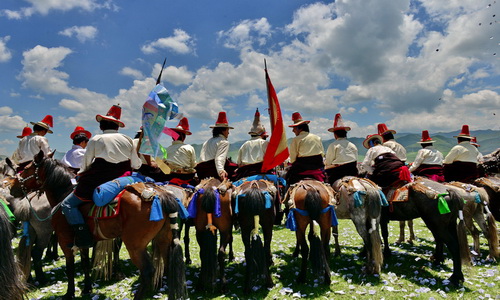
Horse racing is the most important festival in northern Tibet especially in the grassland area. Horsemanship has a long history in Nagchu, and the festival is observed usually at the end of the seventh month or at the beginning of the eighth month of the Tibetan calendar every year. Thousands of herdsmen swarm to Nagchu with their best horses and goods, turning the grassland into a town of yurts. Horse racing is the favorite traditional sports activity amongst Tibetans. The races usually last five to seven days, often with folk songs and pastoral dancing adding to the fun.
Date: from 20th July 2020 (Not fixed, subjected to change)
Customs and Traditions:
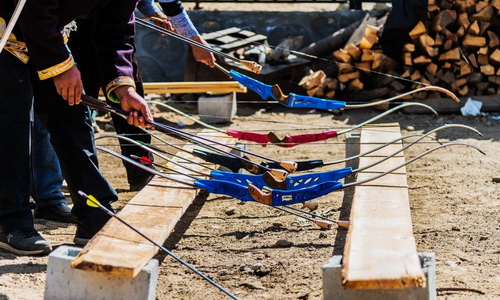
Horse race and archery are popular sports in Tibet, and Gyangtse is famous for being the earliest in horserace history from 1408. Traditional competitions mainly include horse race, archery, shooting on gallop, and the hearty picnics after the game. Now ball games, track and field events, folk songs and dances, barter trade are added into the celebrations, too.
Date: 15th day of the 6th Month of Tibetan Calendar (3rd August 2020)
Customs and Traditions:
On the 15th day of the 6th Month of Tibetan Calendar, a huge bright-colored thangka with Buddha image would be unveiled on a hill of Ganden Monastery for a half day in the morning. Thousands of believers would offer hada to pay homages to the Buddha image.
Date: 30th day of the 6th Month of Tibetan Calendar (19th August 2020)
Customs and Traditions:
Shoton Festival is No. 1 biggest event for Tibetans. According to the traditions, all the lamas shall focus on meditation indoors from the fourth month to the sixth month of Tibetan year, and the abstinence would be broken by the end of the sixth month when they could go out. Ordinary people would go to the monasteries to offer yogurt to lamas. Thus Shoton Festival is also called yogurt festival.
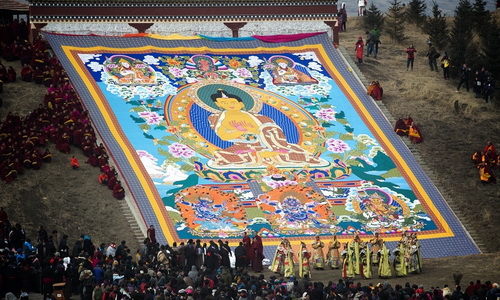
The start of Shoton Festival is usually marked by a grand Thangka-unveiling rituals in Drepung and Sera Monasteries, which are annual spectacles in entire Lhasa. Afterwards, teams of Tibetan opera and theatrical troupes would enter Norbulingka for free performances and parades for a couple of days. Local Tibetans would also go to the garden park to picnic with families and friends.
Date: 7th Month of Tibetan Calendar (mostly in Aug month each year)
Customs and Traditions:
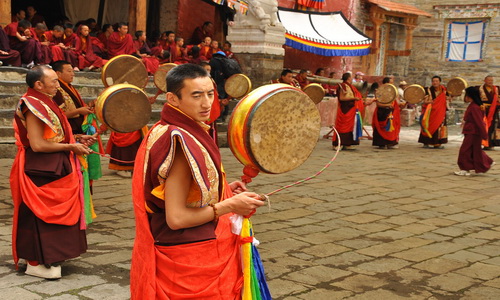
With a history more than 1,500 years, the Wongkor Festival is an event for Tibetans to honor the bumper harvest in summer. The festival has no fixed date as it usually falls on the time when crops are ripe. Before the harvest, people would dress up and uphold colorful flags with good wishes walking around the fields for praying. There will be towers of harvest made with barley stalks and wheat ears, around which locals sing and dance to the drum beats. On this day, people also enjoy horseracing, archery, opera, and picnics.
Date: 6th-12th day of 7th Month of Tibetan Calendar (24th - 30th August 2020)
Customs and Traditions:
The Bathing Festival in Tibet usually falls when the Venus appears for seven nights in one year. In the periods, the water is regarded as the holiest and cleanest, which is good for a bath. Both men and women, old and young, would plan outings to a river or lake to practice their old customs by bathing and washing clothes. Tibetan people believe the holy water would protect them from illness and strengthen heath.
Date: 8th day of the 7th of Tibetan Calendar (26th August 2020)
Customs and Traditions:
On this day, Drepung Monastery would display the famous Naga Stupa that is unavailable for visit in other time. A lot of Tibetans would go to Drepung monastery to pay homage to the Naga Stupa for wishes of health and prosperity.
Date: 3rd day of the 8th Month of Tibetan Calendar (20th September 2020)
Customs and Traditions:
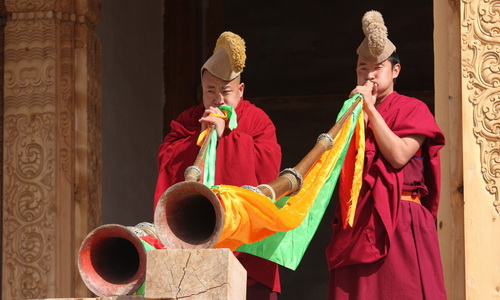
There will be a big cham dances event held at Tashi Lhunpo Monastery for 4 days. With the roaring of horns, lamas would wear their curious masks to dance in great passion. Buddhist disciples would also gather in the monastery to enjoy the dancing show with their own-prepared yogurt and candies.
Date: 22nd day of the 9th Month of Tibetan Calendar (7th Nov 2020)
Customs and Traditions:
It is one of the major Tibetan Buddhist Festivals. The legend has it that the 22nd day of the ninth month of the Tibetan calendar was the day when the Buddha Shakyamuni preached a sermon to his mother in Tushita Heaven and then descended to the world. From the early morning, thousands of followers would line up in front of the Jokhang Temple in Lhasa, waiting for their homage to the Sakyamuni Buddha statue and offering butter to the incense lamp. Around Barkhor Street, worshippers scramble to add pine and cypress branches to the incense stoves, with smokes whirling in the entire square of Potala.
Date: 15th day of the 10th Month of Tibetan Calendar (30th November 2020)
Customs and Traditions:
Fairy Maiden Festival already becomes a great celebration for females in Tibet. Women will get up and dress up early for a pilgrimage to Barkhor Street in Lhasa. It is a tradition to offer Hada to the goddess and make wishes for health and harvest. Lama monks would hold the statue of the Fairy Maiden of the Jokhang Temple to parade around the city.
Date: 25th day of the 10th Month of Tibetan Calendar (10th Dec 2020)
Customs and Traditions:
The Ganden Ngacho or Butter Lamp Offering Day is a festival honoring the death anniversary of Tsongkhapa, a feamous Tibetan Buddhist master who founded Gelukpa shcool of Tibetan Buddhism. On that particular day, all Tibetans would lit butter lamps on roofs of their houses and monasteries as well as main streets to commemorate the great figure. In Ganden monastery, there will be grand rituals as it is the place where the seat and stupa of Tsongkhapa were rested.









